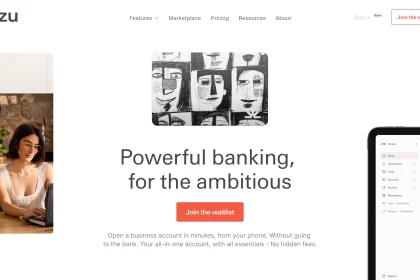With the recent emphasis on digital in the banking sector, there is a risk of overdoing it and losing the one aspect that is still lacking in the industry — the human touch.
The Human Touch Rules Everything
Seeing as we’re at a critical juncture before the next major disruption — AI and Robotics — transform how we work once again, it is important for us to nail digital.
In the quest to amalgamate the banking experience into one single channel — either a smartphone app, an ATM or other digital channels — there are several human traits that banks have to keep at the forefront for their digital strategy to be successful. Otherwise, going digital will be a retrogression rather than evolution.
Let’s look at a few of these traits that I think the Nigerian banking sector desperately needs:
Flexibility
We all know that digital channels give flexibility of access. Digital banks are able to grant their customers access to their services on the customer’s own terms. This means that while the bank may subtly nudge customers to use certain nodes/channels such as a phone app, social media, ATM and online, every channel has to be optimized to give the user a hassle-free experience, regardless of his or her choice- That is the premise of digital banking.
However, human relationships and experiences are flexible. Flexible in the sense that we change our minds all the time and usually, life simply “just happens” — we get stuck in traffic, we relocate, we get hitched, we lose a loved one, the list goes on.
As such, plans change and schedules are edited. Banks have to figure out a way to compensate for this reality. Especially in the digital landscape. How can a digital bank be flexible in rendering that extra bit of service during extraneous circumstances?
For example, there might be a limit on a daily transaction of a customer who just lost a loved one and needs to make some emergency arrangements. A good dose of a human voice albeit via digital channels and some flexibility in the technology of the digital banking platform such that in real time the banking platform may be able to increase limits and grant the customer extra cash is the type of human-centred (digital) flexibility digital banks may need to adopt.
Active Listening
Human beings have one defining trait which is our ability to listen. It is a critical ability because we’re extremely social beings. We want to be heard, understood and appreciated. So we talk.
And when we are not heard, we act out.
One of the best experiences I ever had in a bank was several years ago. I wanted to pay a cheque into a third party account. But there was a problem with some of my documents. The account officer took his time to explain what exactly was wrong, he explained exactly how to fix the issue without having to leave the hall. I went back to meet him several times to ask follow up questions, and he would listen till he understood what I was saying and give the appropriate feedback. What could have been a torturous experience ended up being one of my very best.
With technology, it is possible to simplify, replicate and scale this kind of experience for every single customer. Relationships are forged and deepened when we have pleasant experiences with others. This includes brands and service providers.
The bank’s job is to take your money, keep it and manage it for you. A human bank will go the extra mile to offer you appropriate products and services that can meet your needs, improve your life and business, and in a timely manner.
This is only possible when banks listen.
Customers aren’t just statistics or numbers in a financial report. They are human and so, want to be heard. Judging by the fact that banks are being entrusted with the customer’s money, they are right to expect value for their trust. This is where the migration to digital gives banks a huge advantage. Customers spend so much time online, interacting with digital tech and products that it is possible to know more about your customers than ever before.
Defining each customers social node and using data analytics to preempt their needs may seem a bit “sci-fi” but this is the model banks need to adopt to be able to listen properly to their customers as individuals in the digital landscape.
Banks need to not just be digital banks but also create a strategy to evolve to being social banking platforms.
Relevance
Human beings are tribal. We have our social circles. The geeks, the techies, the hustlers, the foodies, the health enthusiasts, the entrepreneurs, the list goes on.
Consciously or subconsciously, we seek out groups where we can find people who share our views and values, who care about the things we care about. We want to be understood. We want to get mad about the same things (just look at how we argue over our favourite sports teams).
A “human bank” will feel like a part of our tribe. It would share our values and interests. It would care about the things we care about.
For example, banks can partner with the tribe’s most used and most preferred brands in order to facilitate easier, faster access, sometimes at a subsidized cost. On social media, banks can easily scan what restaurants and brands you ‘like’, and offer you meaningful promotions. Or a bank may simply automatically change interface design and user experience of their digital platforms based on what social trends or tribe the customer belongs to. They can decide to be as fluid as possible in this transition in a bid to let the customer know that they are “in tune” with them. There are a dozen ways banks can become more relevant in their customers’ lives and endear their customers to them.
Obviously, this isn’t possible without active listening on the part of the financial service provider.
Service Evolution/Customization
For decades, financial products and services have been supply driven. Most providers use a one size fits all approach to new product launches, which explains the limited levels of adoption and success of these products.
For the customer, a human bank would feel like it is evolving over time. But for the bank, the technical term is customization.
Over time, the relationship with the bank should improve — product offerings should evolve, there should be less friction in communication, and the time to delivery of service should be reducing.
Digital technology empowers providers to customise the banking experience for the customer.
For example, one of my friends has kept an account with a certain bank since his undergraduate days. Since then my friend has a) earned a postgraduate degree b) started working c) got his own apartment d) got engaged and will get married in a few months. And what role has his bank played in all this? None. The bank has been nothing more than a piggybank (and you wonder why people don’t like going to the bank).
What should have been done? It’s what I would like to call circumstance-based banking. For instance, his simple savings account should have evolved into several things. When he was going for his postgrad, he sure could have used a loan and a special savings scheme. When he was moving into his first apartment, he could have used another loan. This is an area where banks drop the ball and I consider it a major missed opportunity.
Most people reach for their phones first thing in the morning after waking up. People have already forged a strong dependence on technology and by extension, certain apps, brands and services. Banks can replicate this kind of tight-knit relationship with their customers but only if they can demonstrate their “humanity”. Again, this all depends on (gathering the right) data, data, data, data, data and its proper analytics!
About The Author
Edmund Olotu is a serial entrepreneur with companies including Novira Therapeutics, sold to Johnson & Johnson for $600M and TechAdvance: a utility payment company processing more than ₦21b annually.
Original Post on Medium










